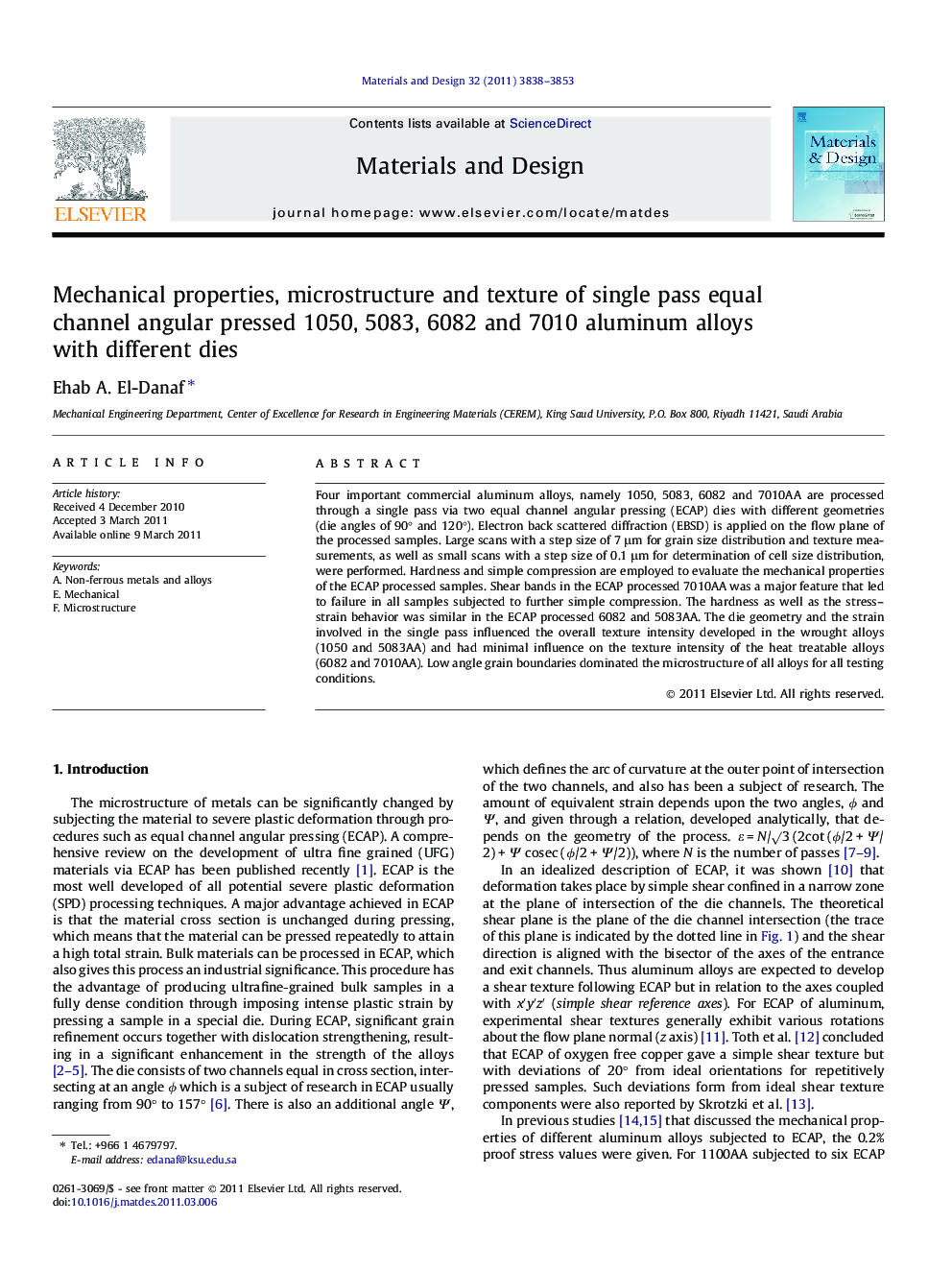| Article ID | Journal | Published Year | Pages | File Type |
|---|---|---|---|---|
| 831510 | Materials & Design (1980-2015) | 2011 | 16 Pages |
Four important commercial aluminum alloys, namely 1050, 5083, 6082 and 7010AA are processed through a single pass via two equal channel angular pressing (ECAP) dies with different geometries (die angles of 90° and 120°). Electron back scattered diffraction (EBSD) is applied on the flow plane of the processed samples. Large scans with a step size of 7 μm for grain size distribution and texture measurements, as well as small scans with a step size of 0.1 μm for determination of cell size distribution, were performed. Hardness and simple compression are employed to evaluate the mechanical properties of the ECAP processed samples. Shear bands in the ECAP processed 7010AA was a major feature that led to failure in all samples subjected to further simple compression. The hardness as well as the stress–strain behavior was similar in the ECAP processed 6082 and 5083AA. The die geometry and the strain involved in the single pass influenced the overall texture intensity developed in the wrought alloys (1050 and 5083AA) and had minimal influence on the texture intensity of the heat treatable alloys (6082 and 7010AA). Low angle grain boundaries dominated the microstructure of all alloys for all testing conditions.
► Four different commercial aluminum alloys namely; 1050, 5083, 6082 and 7010AA are subjected to a single ECAP pass in two different dies. ► Evolution of mechanical properties (hardness, compression stress – strain response) were documented. ► Microstructure (grain size, cell size and misorientation angle, fraction of low angle grain boundaries) was quantitatively investigated. ► Texture (pole figures and ODF plots) and the intensity of texture fibers were quantified for all alloys.
